Let’s be real: battle royale fatigue is a thing. Between endless circle shrinkage, recycled loot pools, and predictable tactics, most BR modes blur into one forgettable grind. Even in World of Tanks—a game known for its methodical pace and tactical nuance—the prospect of a battle royale might sound like a gimmick. But Steel Hunter throws that assumption under the tracks.
This isn’t your average last-tank-standing match. Steel Hunter: Reborn delivers a full-throttle PvPvE experience built on high-stakes survival, strategic upgrades, and a progression system that rewards bold plays. From AI marauders to loot-rich battlegrounds, it’s not just a new game mode—it’s a carefully crafted test of adaptability and nerve.
TL;DR – What Makes Steel Hunter Worth Your Time?
- Unique BR gameplay tailored for tank mechanics—more tactical than twitchy.
- Upgrade-on-the-fly system creates evolving gameplay every match.
- AI enemies (Marauders) provide early-game engagement and XP farm.
- Respawn mechanics give players a second chance—within limits.
- Loot, progression, and exclusive rewards make each match rewarding beyond survival.
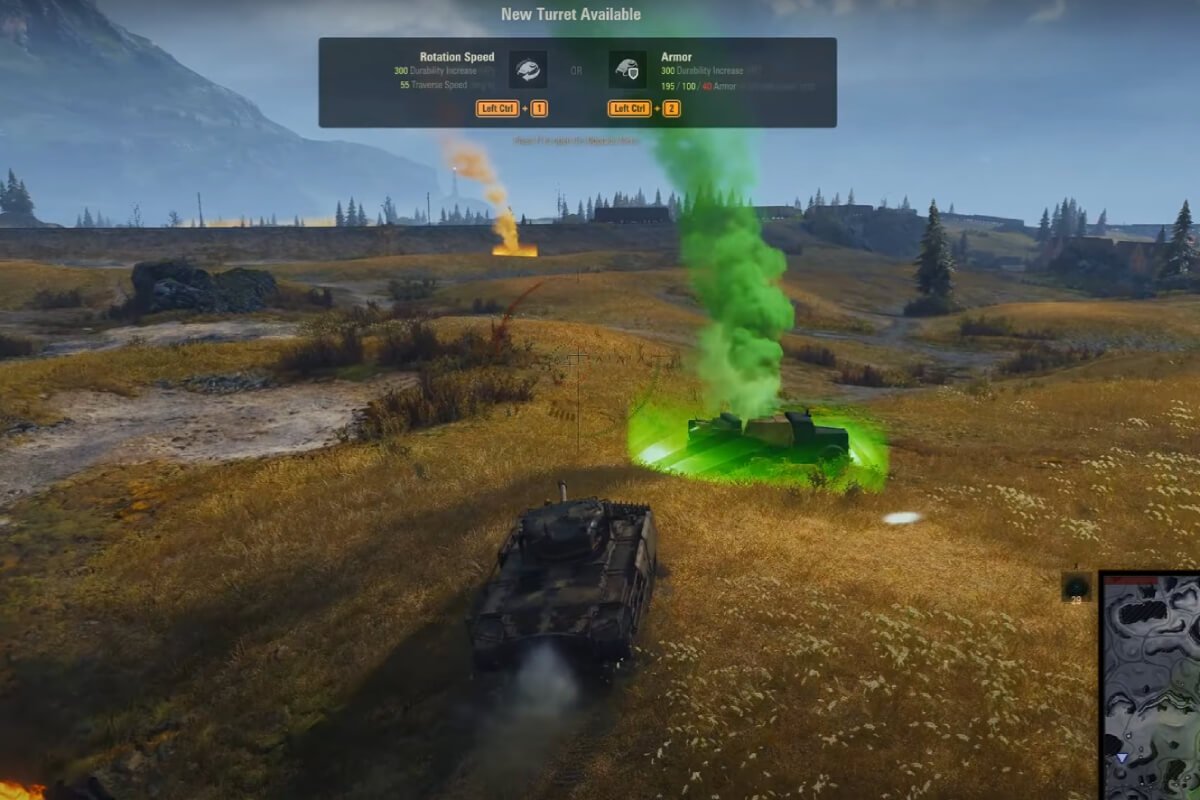
Steel Hunter at a Glance
Steel Hunter is a battle royale-style mode in World of Tanks, introduced as a time-limited recurring event that shakes up standard gameplay with its fast-paced survival dynamics and mode-exclusive mechanics. Unlike traditional WoT battles, Steel Hunter features either 20 solo players or up to 30 players in 2-player platoons, all dropped into a large, hostile map. The core objective is simple—be the last one standing. But achieving that requires mastering unique vehicles, adapting to dynamic map conditions, collecting on-the-fly upgrades, and outmaneuvering both AI-controlled enemies and unpredictable human opponents. With no standard crew skills or equipment and a completely redesigned detection system, this mode requires fresh tactics and quick thinking.
Steel Hunter is not just about firepower—it’s about making smart decisions under pressure. You can join solo or in platoons, select your starting location during the countdown, and take advantage of limited respawn mechanics to stage comebacks. The high-stakes design, combined with in-match upgrade mechanics and an evolving combat environment, makes every match feel like a new experience. For players who want more than the slow-burn pace of classic WoT gameplay, Steel Hunter delivers adrenaline-fueled, dynamic encounters that reward strategic decision-making and quick adaptation.
Mode Mechanics That Change the Game
Dynamic Shrinking Zones
The maps in Steel Hunter constantly evolve during battle due to the presence of “Danger Zones,” which are areas that deal continuous damage to any player inside them. These red zones slowly shrink the playable space, effectively forcing players into conflict as the safe zone contracts. It’s not just a visual cue—entering these zones causes your tank to take damage over time, making camping strategies obsolete. Movement becomes a necessity, not a choice.
The mode’s pressure-driven design creates high-tension gameplay, particularly in the late stages, when map size is drastically reduced and remaining players are pushed into tight, often chaotic final engagements. Navigating the changing battlefield while watching for loot and threats from other players and AI Marauders keeps the tension high. Smart players will plan their movements to stay ahead of the zone, secure valuable airdrops, and prepare ambushes near choke points.
Knowing the map layout and the likely movement paths of opponents becomes an important skill. The shrinking zone mechanic ensures that every match has a distinct flow and escalating tension, culminating in a final showdown where the most aware and well-equipped tankers prevail. There’s no room for passive gameplay—Steel Hunter rewards bold movement, awareness, and smart use of terrain.
Time-Limited Respawns
One of the standout mechanics in Steel Hunter is its limited respawn feature. For solo players, a single respawn is available if they are eliminated within the first 5 minutes of the match. In platoon mode, the team shares two respawns that can be used in the first 8 minutes. Respawning in a solo match drops you in a safe location, allowing you to rejoin the fight with your previous upgrade level intact, although you’ll lose some consumables.
In platoon mode, respawning requires that one teammate is out of combat for at least 10 seconds. This design offers a rare second chance, adding a layer of psychological strategy—do you go aggressive early, knowing you have a fallback, or play conservatively to preserve that extra life for mid-game? After the time limit passes, respawns are disabled, meaning every decision you make after that point could end your match. The mechanic increases early-game aggression but demands late-game caution and precision. It also rewards coordinated play in platoons, as reviving a teammate requires discipline and timing.
Steel Hunter’s respawn system strikes a delicate balance—punishing recklessness while offering redemption. It creates a meta-game within the game, where managing your life count and cooldowns is just as important as your aim and armor.
Loot and Progression
Steel Hunter replaces traditional loadouts with an evolving, loot-driven progression system. At match start, players are equipped with a baseline vehicle. To enhance firepower and survivability, they must scavenge four types of loot crates scattered across the map: Green (basic ammo), Yellow (consumables), Blue (high-value with respawn charges), and Red (spoils from defeated players). Loot isn’t just for resources—it grants XP. Accumulating XP allows players to level up their vehicle and select from one of two upgrade options at each tier. There are seven upgrade levels in total, and the branching upgrade paths mean no two matches play the same, even with the same vehicle. Some upgrades emphasize armor, others focus on mobility or weapon performance, and selecting the right ones based on your strategy and situation becomes critical.
The randomness and scarcity of high-value loot—especially Blue and Red crates—add layers of risk and reward. These crates often become conflict hotspots, as their locations are visible to all players. The upgrade system introduces organic power scaling where tactical decisions—like when to fight and when to farm—define your late-game strength. Smart players will secure early XP through Marauder kills or safe loot paths to gain an edge before others have a chance to react.
The Maps: Tactical Diversity and Choke Point Carnage
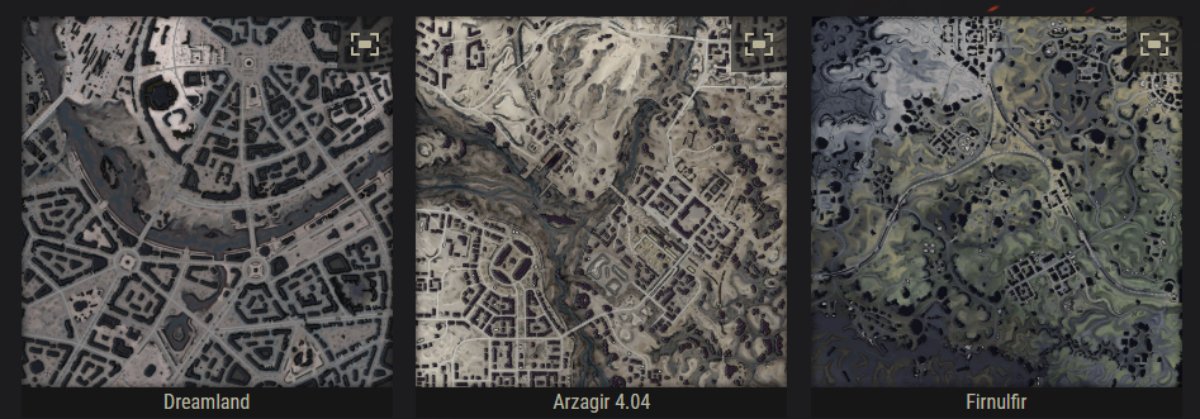
Dreamland
Dreamland is a large, frozen cityscape filled with complex geometry, tight alleyways, and wide-open plazas that invite ambush tactics. This map emphasizes verticality and destructible cover, making it ideal for players who like using the environment to their advantage.
The map’s mixture of confined urban areas and open kill zones allows for both stealth and brute force strategies. Long corridors between buildings become sniper lanes, while tight urban blocks reward close-quarters combat. Dreamland also features multiple entry points to contested areas, giving creative players the ability to flank or retreat effectively. The icy terrain can affect movement, and the visual aesthetic makes spotting enemy silhouettes trickier than usual. Loot in Dreamland often spawns in risk-reward areas like exposed courtyards or underground corridors, requiring careful timing and scouting. In terms of Danger Zone shrinkage, Dreamland funnels players into central intersections or multi-level industrial yards, making endgame fights here particularly chaotic and vertical.
Players who know how to bait others into killboxes or set up ambushes using corners and elevation changes often dominate on this map. Coordination, awareness, and timing are essential to survive Dreamland’s frozen chaos and claim victory from its icy grasp.
Arzagir 4.04
Arzagir 4.04 is an industrial wasteland with a distinct post-apocalyptic feel. The map lacks large buildings or elevated structures, replacing them with sprawling terrain, pipes, wreckage, and semi-open spaces that reward aggressive looting and flanking plays. This is a map where vision and mobility are more valuable than armor. With fewer hiding spots, players must rely on movement and map awareness to stay alive. The open design makes Radio Detection a risky tool—while it reveals loot and enemies, it also exposes your position in a flat landscape. Loot spawns are scattered, often along broken roads and near ruined facilities, so planning a safe route is essential.
The Danger Zone here pushes players toward a central refinery area, often resulting in chaotic endgame brawls in confined industrial spaces. Smart players will use terrain elevation and pipe layouts for cover, while less aware tankers may find themselves caught in crossfire. The minimal cover makes airdrop contests especially brutal, often ending in multi-player skirmishes with little room for escape. Arzagir 4.04 rewards quick decision-making and an aggressive approach. The earlier you dominate a section of the map and upgrade, the more likely you are to control the match tempo from mid-game onward.
Firnulfir
Firnulfir is the most visually haunting and thematically intense of the Steel Hunter maps. Its snow-covered fields, skeletal trees, and dilapidated ruins create a grim, battlefield-like tone. Terrain here is deceptively complex, with gradual slopes, shallow ridges, and ruined fortifications that hide enemy movement. Unlike Dreamland or Arzagir, Firnulfir doesn’t offer clearly defined urban or industrial zones—everything feels organic and decayed. Visibility is limited, and elevation changes can conceal entire tanks until it’s too late. This makes Firnulfir a haven for ambushers who know how to use concealment.
Loot crates often appear near cliff edges or within old structures, requiring calculated risk to retrieve. Danger Zones frequently collapse toward forested areas or frozen riverbeds, increasing unpredictability in final engagements. The eerie silence of the map adds tension—every sound, from engine revs to explosions, carries. Successful players treat Firnulfir as a stealth map, moving cautiously, scanning ridgelines, and preparing escape routes. In late-game situations, surviving without being seen often outweighs outgunning opponents. Firnulfir rewards patience, precise control, and high situational awareness. It’s not about brute force—it’s about hunting and surviving like a ghost tank in a snowstorm.
Vehicles and Upgrades: Choose Your Monster
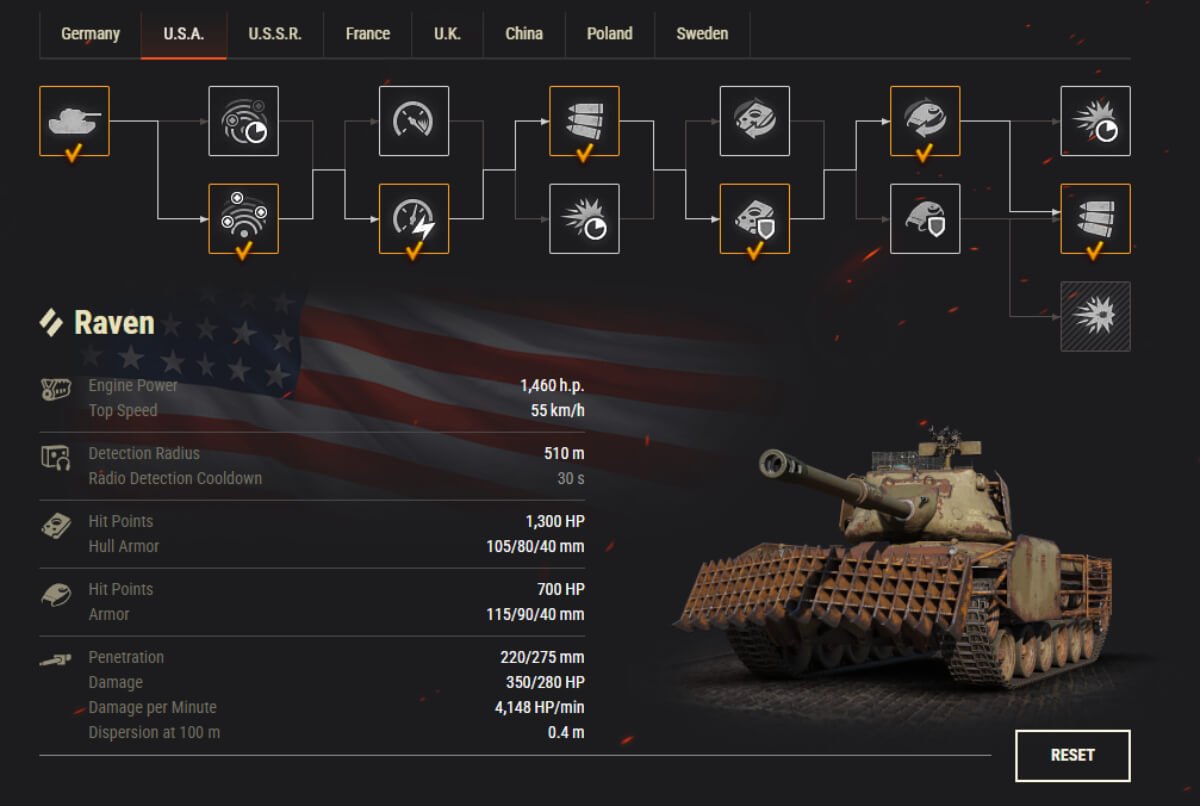
Steel Hunter breaks from traditional WoT formats by introducing mode-specific vehicles that cannot use standard crew skills or equipment. This design levels the playing field and encourages a new layer of strategy centered around each vehicle’s default characteristics and upgrade potential. Each tank in Steel Hunter is built with a unique role in mind—some excel in speed and flanking, others in durability and brawling, and a few in ranged engagements or hybrid tactics. The balance comes not from module or consumable customization but from mid-match choices. Players can select between two different upgrades at each level as they earn XP, steering their tank’s evolution in real time.
This on-the-fly upgrade system means two players piloting the same base tank might end up with entirely different final builds depending on their strategy. For example, one player may turn their light tank into a stealthy assassin using speed and vision boosts, while another could opt for offensive firepower and hull durability to dive directly into fights. These upgrades dramatically impact a tank’s performance, allowing adaptability based on how the match unfolds.
Moreover, each vehicle comes equipped with distinct Combat Abilities. While all vehicles share access to essentials like Repair Kit and Recovery, others offer unique tools like Airstrikes, Deployable Drones, Target Tracking, and Turbo Boosters. Using these abilities at the right time—during ambushes, retreats, or push attempts—can be the deciding factor in a match. Understanding your vehicle’s strengths, choosing the right upgrades, and timing your abilities well is the key to becoming the last survivor in Steel Hunter.
Spotting, Vision, and Detection
Steel Hunter overhauls the classic World of Tanks spotting mechanics to heighten tactical immersion. Instead of the usual 360-degree vision system, players rely on a 120-degree vision cone extending from the front of their turret. This creates an intense need for turret awareness and positioning. Simply put, if an enemy isn’t in your cone—and not within 50 meters—they remain invisible, even if your tank’s view range would normally spot them. This brings new weight to vehicle orientation and reinforces the value of movement and recon skills. In addition to this cone system, Proximity Spotting guarantees automatic detection of any enemies within a 50-meter radius, regardless of turret direction. This adds urgency when maneuvering close to buildings or tight terrain, where an unseen foe could be lurking around the corner.
Another crucial feature is Radio Detection. Activating this tool reveals the locations of nearby loot and enemies—but there’s a twist. When you activate it, your tank’s location becomes visible to every player on the minimap. The benefit? A tactical snapshot of the battlefield. The cost? You become a glowing beacon to any opportunists nearby. That tradeoff makes Radio Detection a true gamble—one that requires proper timing and situational awareness. Using it right before entering a contested loot zone or a final confrontation can offer major rewards, but reckless activation can turn you into easy prey. Combined, these systems elevate the importance of line-of-sight discipline, predictive movement, and battlefield control in a way that feels entirely different from traditional World of Tanks matches.
Loot Categories and Their Strategic Use
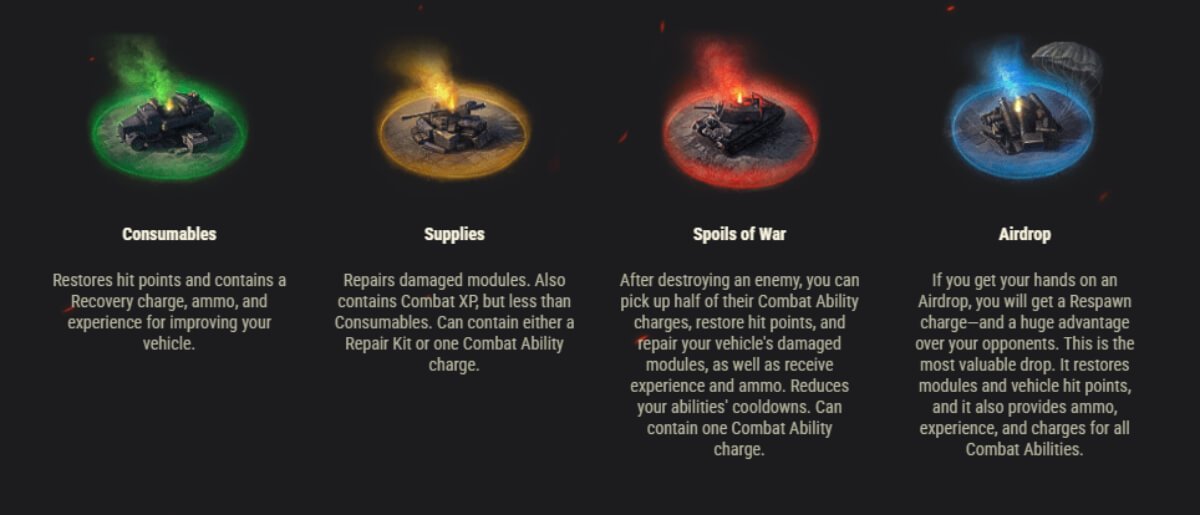
Loot drives the entire gameplay loop of Steel Hunter. From the opening seconds to the final minutes, success often hinges on a player’s ability to locate and secure resources from four distinct crate types. Each type is color-coded and has a unique function in your survival strategy. Green Crates offer essential ammo and basic repairs—ideal for quick reloads and recovering from minor scrapes. These are the most common, appearing frequently across the map in relatively safe areas. Yellow Crates introduce consumables like healing boosts or temporary power-ups. These appear less frequently but offer mid-game stability when managing ability cooldowns or HP gaps.
Blue Crates are high-risk, high-reward objects. They drop at fixed intervals, visible to every player, and contain powerful enhancements and respawn charges. These often serve as flashpoints for skirmishes, with multiple players converging on their drop zones. Successfully securing a blue crate early on can give you an upgrade edge, but failing in the attempt can quickly end your run. Red Crates, also known as Spoils of War, appear where a player has recently been destroyed. These contain leftover XP, partial consumables, and healing boosts. Collecting these is efficient but risky, as the smoke trail marking their location acts as a siren call for scavengers and predators alike. Knowing when to dive in for red crates versus backing off and repositioning is a sign of experience. Together, these loot types shape the pacing and tactics of every match, forcing players to constantly weigh risk, reward, and readiness.
AI Marauders: PvE with a Purpose
Marauders are AI-controlled enemies that spawn throughout the map and offer players both a resource advantage and an opportunity to test their combat readiness. Unlike human players, Marauders are predictable—but no less deadly in numbers or the wrong situation. They come in three types: Hares, Wolves, and Bears. Hares are fast but lightly armored and typically flee on sight. They provide quick XP for early upgrades but vanish quickly if not pursued. Wolves are balanced opponents who can dish out and take moderate damage. They often appear in groups and require a measured approach. Bears are slow, heavily armored brutes who absorb huge amounts of damage before going down, but offer the best rewards when destroyed.
Engaging Marauders is an essential early-game tactic. They provide reliable XP and loot with fewer risks than player encounters. However, engaging them carelessly or in contested zones can attract enemy attention. Clever players use Marauders as bait—waiting for others to engage them, then ambushing during the distraction. In the late game, however, Marauders become less common and less impactful, shifting focus entirely to player-versus-player survival. Still, early dominance often stems from knowing where Marauders spawn and optimizing kill routes. Learning their behaviors and typical positions gives returning players a tactical edge. PvE in Steel Hunter isn’t just filler content—it’s a vital layer of the meta-game that helps newer players engage in low-stakes combat and offers veterans a calculated way to build momentum before hunting human opponents.
Player Strategies and Survival Tactics
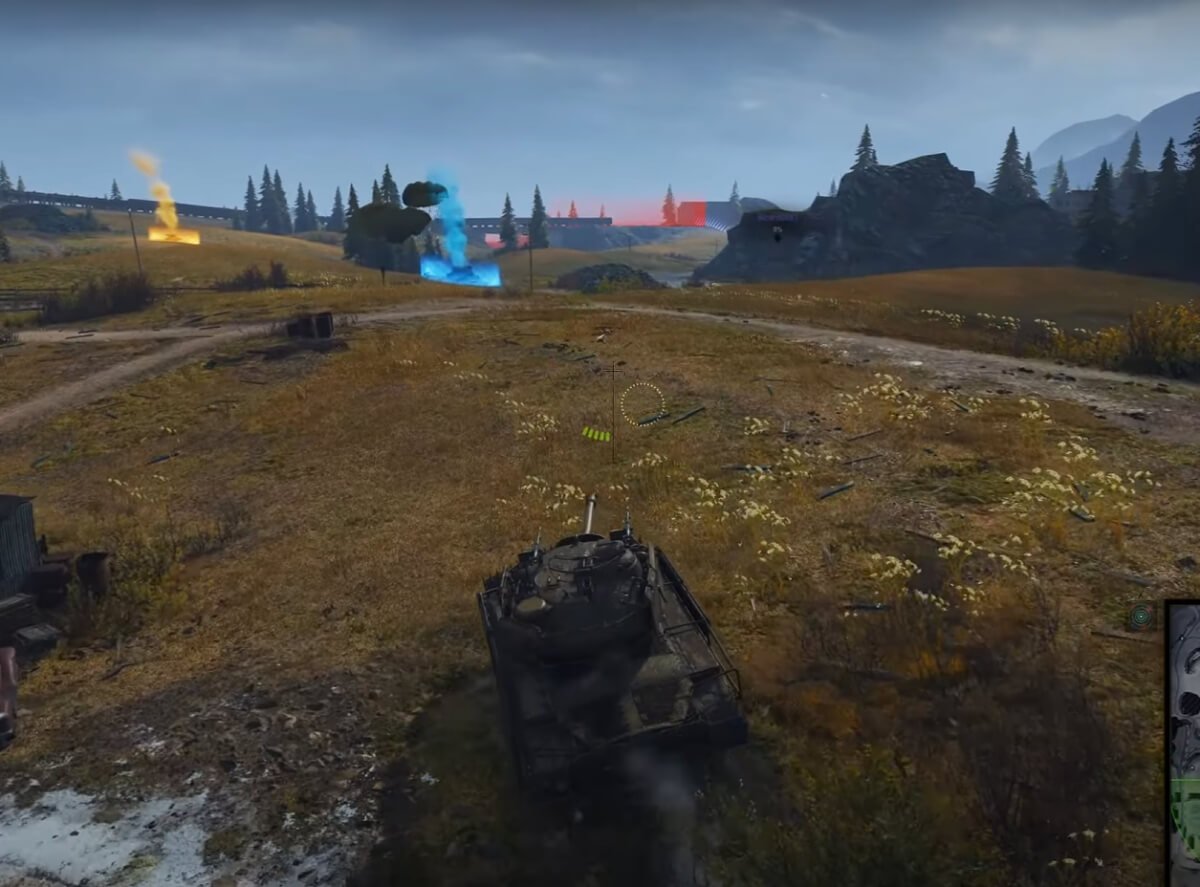
Success in Steel Hunter isn’t just about gunnery—it’s a test of tactical intelligence, risk management, and adaptability. From the start, situational awareness sets winners apart. Players should monitor the minimap for crate drops, enemy markers via Radio Detection, and Danger Zone shrinkage patterns. These data points help formulate safer travel routes and identify high-traffic areas where fights are inevitable. Early-game strategy often focuses on farming XP from Marauders and collecting low-risk Green and Yellow crates to get essential upgrades without drawing too much attention. Choosing a low-conflict spawn location also helps to build strength before facing human opponents.
Engagement decisions are equally critical. In Steel Hunter, not every opponent needs to be fought. Sometimes it’s wiser to disengage and reposition rather than risk your run on an uncertain encounter. Players who develop good judgment on when to strike and when to flee tend to survive longer. Radio Detection should be used carefully, not just for finding loot but also for baiting enemies into traps. Activate it near a loot drop, wait in cover, and ambush players who respond. Another key survival tactic involves third-party awareness—observing ongoing fights and swooping in to finish off weakened survivors or clean up valuable Spoils of War. Finally, make use of terrain and elevation to break vision cones and surprise enemies. The players who win most often are those who prepare for the endgame from the first minute of the match. Steel Hunter rewards those who play with foresight and flexibility.
Communication Tools in Platoon Mode
When fighting in platoons, Steel Hunter offers several tools to maintain coordination between teammates. First and foremost is Random Platoons, a matchmaking feature that pairs players of similar skill levels together. While not as precise as pre-made duos, this system balances platoons so that veterans aren’t matched with complete newcomers. For communication, the game includes built-in voice chat, allowing players to make real-time strategic decisions. This is invaluable for calling out loot locations, synchronizing engagements, or initiating team-based ambushes.
For players without microphones or who prefer quieter play, the Chat Wheel is an effective alternative. This radial menu offers quick commands like “Need help,” “Enemy spotted,” or “Go to this location.” While less dynamic than voice, it still enables basic tactical dialogue. Communication is especially important in reviving teammates. In platoon matches, each team has two shared respawns, but reviving requires a player to be out of combat for 10 seconds. Coordinating these moments without speech can be difficult, making chat tools essential. Overall, efficient use of communication tools transforms platoons from two solo players into a cohesive unit. Winning platoons tend to be those that communicate consistently, divide resources smartly, and avoid overextending into solo brawls. Whether using a mic or not, players who keep each other informed have a higher chance of reaching the final showdown together.
Progression System and Exclusive Rewards
Steel Hunter offers more than just thrilling combat—it also features a rewarding progression system that incentivizes daily participation. Players earn Progression Points based on in-match performance and by completing daily missions. These missions are typically accessible to all skill levels and include tasks like damaging enemies, surviving to a certain phase, or collecting loot crates. As players accumulate points, they unlock stages that grant increasingly valuable rewards. These include credits (used for general game purchases), Steel Seals (a mode-specific currency), and exclusive cosmetic items such as decals, camouflages, and emblems.
Steel Seals can be spent in the dedicated Steel Hunter shop, offering limited-time customization options that reflect a player’s achievement and style. These cosmetics are often unavailable elsewhere in the game, making them status symbols within the community. This system ensures that even if a player doesn’t win every match, they’re still progressing toward meaningful goals. The daily mission system also keeps the player base active, ensuring shorter queue times and more competitive matchmaking. In short, the rewards structure in Steel Hunter supports both casual players seeking steady progress and competitive players aiming for bragging rights. It adds a long-term layer of motivation to a mode already packed with short-term thrills.
Community Feedback and Game Balance
Steel Hunter has generated strong reactions from the World of Tanks community, most of them positive. Players consistently praise the mode for its departure from standard formats and for offering a refreshing, high-tension experience. The hybrid PvPvE design is often highlighted as a strength, giving players meaningful choices and tactical diversity. The upgrade system and role-specific vehicles are appreciated for the depth they add to matches, and many fans have requested that Steel Hunter be made a permanent feature or appear more frequently in the event calendar.
That said, some criticisms remain. Chief among them is the limited map pool. While Dreamland, Arzagir 4.04, and Firnulfir each offer distinct styles, frequent players have expressed a desire for new environments to maintain freshness. Another contentious point is the respawn mechanic. Some players believe that second chances reduce the importance of early-game eliminations, while others argue that they balance out the often random nature of early fights. Wargaming has taken some of this feedback into account during updates, tweaking spawn mechanics and balancing AI behavior. The reception overall reflects a mode with a strong core and room for evolution. If the developers continue listening to the community, Steel Hunter has the potential to become a mainstay event beloved by both casuals and hardcore tankers alike.
Technical Features and Support Tools
Steel Hunter isn’t just fun to play—it’s built on a solid technical foundation that enhances both individual and competitive experiences. The mode uses Skill-Based Matchmaking to ensure that players are pitted against others of comparable ability. This reduces instances of lopsided matches and creates a more balanced competitive environment. Replay Support is fully integrated, allowing players to analyze their gameplay, review decisions, or create content for YouTube and streaming platforms. This is a favorite tool for competitive players who want to improve or share highlights.
Spectator Mode has also been enhanced for Steel Hunter, especially during events and tournaments. This feature allows observers to switch between players, view statistics, and follow the action more fluidly. It supports content creators and streamers looking to showcase the mode with professional coverage. After each match, players receive Detailed Post-Battle Stats, which break down damage dealt, loot collected, XP earned, and placement history. These metrics help players track their performance over time and refine their strategies. All of these technical features combine to support a polished, competitive experience. Steel Hunter isn’t just another game mode—it’s a well-supported arena for players to challenge themselves and grow in both skill and status.
Conclusion: Tactical Survival Redefined
Steel Hunter in World of Tanks is more than just a limited-time event—it’s a bold experiment in tactical survival that succeeds on almost every front. It combines the intensity of battle royale design with the calculated decision-making that defines WoT gameplay. With unique vehicles, progressive upgrades, AI threats, smart looting, and a shrinking battlefield, the mode challenges players to constantly adapt. Every decision matters: when to engage, where to spawn, which upgrades to choose, and how to manage resources across a rapidly evolving map.
Whether playing solo or with a platoon, Steel Hunter offers depth, tension, and long-term rewards that keep players coming back. Community feedback has shaped its evolution, and technical improvements ensure it runs as smoothly as it plays. For anyone looking to break away from traditional tank battles and test their skills in an unforgiving, ever-changing warzone, Steel Hunter delivers a top-tier experience. This is World of Tanks at its most strategic and thrilling—an adrenaline-charged fight for survival where the smartest and boldest prevail.


